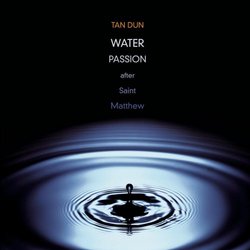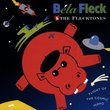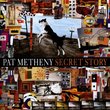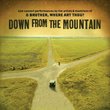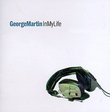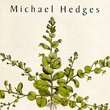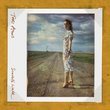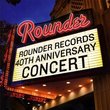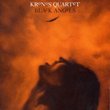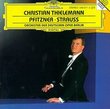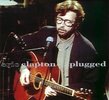| All Artists: Tan Dun, O'Connor, Beiser Title: Water Passion After St Matthew Members Wishing: 0 Total Copies: 0 Label: Sony Release Date: 11/19/2002 Album Type: Live Genre: Classical Styles: Chamber Music, Historical Periods, Classical (c.1770-1830) Number of Discs: 2 SwapaCD Credits: 2 UPCs: 696998992726, 069699899272 |
Search - Tan Dun, O'Connor, Beiser :: Water Passion After St Matthew
CD DetailsSimilarly Requested CDs
|
CD ReviewsSt. Matthew Passion as World Ritual Christopher Forbes | Brooklyn,, NY | 04/16/2003 (5 out of 5 stars) "The concept for this contribution to the Passion 2000 project smacked so much of "political correctness" and world music crossover gimmickry that I almost passed it by. Tan Dun is a composer that intrigues me, but the idea of a Buddhist making understandable this most Christian of stories seemed quite a stretch to me. I shouldn't have worried at all. I have heard three of the four works from the Passion 2000 project, and Tan Dun's work is by far the deepest spiritually. It is an altogether remarkable work. Tan Dun was given the Passion according to Matthew. Not content to deal merely with the passion story, Dun's work starts with the Baptism of Jesus, includes the Temptation in the Wilderness and then continues with the Last Supper, Garden of Gethsemane, the Betrayal/Denial, Trial, Crucifixion and atypically, ends with the Resurrection. Each section is set apart, almost as a tableau, with a ritualistic quality. Tan Dun's "orchestration" is simple but remarkably effective. The work is scored for choir, soprano and baritone soloists, three percussionists, violin and cello soloists and electronics. Many extended techniques are called for. The soprano has to test the greatest extent of her range with declamation that recalls Chinese opera, and the baritone is required to sing in overtones, influenced by Tuvan throat singing. The choir also plays stones, Tibetan bells and other small instruments. The percussionists get the most fascinating instruments. Tan Dun has long been interested in what he calls "water percussion" - instruments which use water as a significant part of their sounding. The effect in this work is elemental...the use of water sounds, stones (specified to have been taken from a river or the ocean) and other natural elements emphasizes the basic natural elements of the story. The overall result is quite moving. The piece begins with a droned sound, in many ways reminiscent of the opening of Wagner's Ring cycle. Then the choir introduces a chorale melody that appears in various guises during the rest of the work. Each tableaux of the work is highly differentiated and given some recognizable sonic symbol. As the story progresses toward the cross, the music becomes wilder and more impassioned. The final section, which poetically represents the Resurrection, is as lovely a closing as I could imagine for this work...in many ways as moving as the music for the final scene of Crouching Tiger Hidden Dragon. Dun strips the passion story down to it's bare spiritual essentials and creates a work of almost ritual power. The live recording is terrific. A better or cleaner one could not be asked for. The string soloists are marvelous, including the ever-fabulous Mark O'Connor on the violin. Both vocal soloists handle the demanding requirements of the piece with grace and aplomb and the choral singing is exquisite. The one thing missing in this wonderful CD is the visual element, which is quite pronounced in this piece, I gather in much the same way as it is in the work of Crumb. This is only a small matter though. In general, I find this to be the strongest, least traditional, and most spiritually moving work of the Passion 2000 cycle, at least that I've heard. Highly recommended!" Tan Dun: A Composer as much for the Visual as the Aural Grady Harp | Los Angeles, CA United States | 04/29/2005 (4 out of 5 stars) "Tan Dun, the 48-year-old composer from Hunan, China now living in the US, has entered the world of notoriety in composition based on successes with music scores for majestic Chinese films. It is not unusual, then, that his works for the stage and for orchestra and voices have a decided visual bent. In a recent premiere of a revised work commissioned by the LA Philharmonic for the opening of Disney Hall - "Paper Concerto for Paper Percussion and Orchestra" - it becomes even more understandable why his music is reaching a wide audience: it is simple, accessible, highly dependent on stagecraft and amplification using his favorite elements remembered from childhood - paper, stone, and water. And while he amazes with his ability to pull as much sound from his 'non-instruments' such as paper or water, his actual orchestral writing is repetitive and minimally interesting. So it is with WATER PASSION. Again, the works should be seen as well as heard: the LA Master Chorale recently performed this work and while the various manipulations of water vessels and pourings are visually beautiful, the choral writing is thick to the point of indecipherable and the instrumental portion is reduced to incidental effects. This recording does its best to capitalize on the absence of the visual and because it is a captured live recording, both the tension and message that is oddly present are as well done as can be expected. Time will tell whether this music is lasting and viable, but for the moment Tan Dun has found a responsive audience for his interesting investigation of the sounds of the world of nature. Grady Harp, April 05" Beautiful, moving music, performed beautifully and passionat David J. Huber | New York, NY United States | 01/19/2010 (5 out of 5 stars) "I had the great pleasure to hear a performance of this at the Brooklyn Academy of Music soon after it premiered, and was moved deeply by the text and music and especially the use of water as an instrument.
This recording is very good, and I'm very glad to have it. The only downside is that, as good as the music is, it really is also a ritual of sorts that needs the visual component of the musicians and singers, all of whom are on stage and visible, and who move around. The instrumentalists playing the water are especially captivating to watch as they use their many objects and devices to get varying sounds from the water (such as clapping on the water for a percussive effect; or pulling water out of a bowl with a colander, so that the water flows down back into the bowl making a rain sound; splashing; and so on). I think this is a very sensitive and moving interpretation of the texts, and the inclusion of water into the score brings in so many images of life and of the Biblical narrative: the waters of the womb and of our planet, as well as the waters of the flood, the parting of the Sea of Reeds, the dew of Harmon, the waters of baptism. As one reviewer mentioned, who was surprised at what he/she was getting into, this is some pretty avante-garde stuff - this is not Bach or Haydn. But it's not also not as extreme as Schoenberg. Tan Dun is part of a legacy of exploration that is able to quite beautifully bridge the worlds of harmonic and tonal forms of the old masters with the complete rejection of harmony and tonality of the 1900s serialists and atonalists, while bringing in some of Cage's chance-style approach to music and the ritualistic nature of Meredith Monk or Robert Wilson. Great stuff, and I'm glad to finally have a copy on CD. I just hope they do a DVD of it sometime so people can see as well as hear the full grandeur of this piece." |

